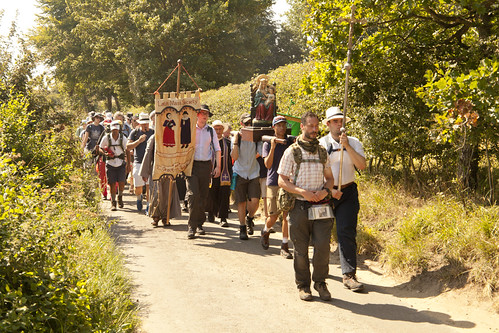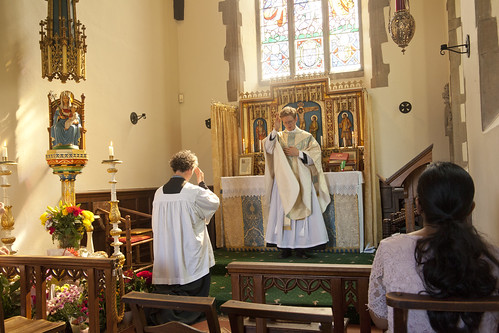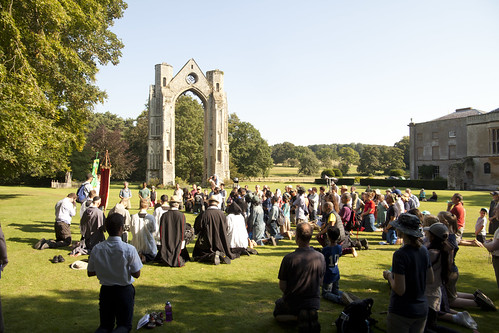Chairman's Blog
Spring Edition of Gregorius Magnus, the magazine of the FIUV
The latest edition of Gregorius Magnus is now available, for Spring 2021.
It includes a report on the events in Rome last October, in place of the usual Summorum Pontificum Pilgrimage.
It also includes a key passage from the French Bishops' summary report to the Congregation for the Doctrine of the Faith on the implementation of Summorum Pontificum, in an English translation published for the first time.
As usual it also includes translations of articles from the quarterly magazines of Una Voce France and Pro Missa Tridentina of Germany, as well as an article from the Latin Mass Society's Mass of Ages, and news and reflections first published here, from Croatia, Romania, and Poland.
It is free to download as a pdf, or to view on the ISSUU website and app for mobile devices.
Server training in London: back in 2021!
Cross-posted from the blog of the Society of St Tarcisius.
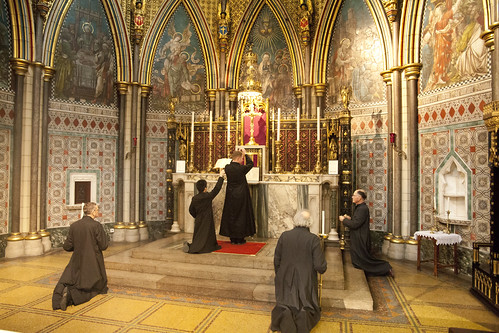 |
| Server training in St James' Spanish Place, March 2020 |
I am delighted to announce after a year of enforced inactivity that we will be returning to running our Server Training Days in London.
24th July: St Mary Moorfields, London
(booking page) (info about the venue)
25th September: St James' Spanish Place, London
(booking page) (info about the venue)
20th November: St James' Spanish Place, London
(booking page) (info about the venue)
As usual, there will be a Guild of St Clare Vestment Mending Day running alongside these events: see here for more details.
 |
| Enrollment of new members at St Mary Moorfields in 2019 |
Who'd like to talk about Socrates and his friends? Yet more Socratic seminars
 |
| Socrates is in green up on the left, in profile. |
In early January I offered to lead some online seminars on early Socratic dialogues, as a small personal response to the lockdown, and (almost to my surprise) this has actually happened.
New Podcast, with Dr Jules Gomes
Iota Unum Podcasts
Coming Home to Rome: Dr Jules Gomes talks to Joseph Shaw
You can hear the podcast on Spotify and other platforms - here's the link to Podbean.
Dr. Jules Gomes, B.A., B.D., M.Th., Ph.D. (Cantab) is Rome Correspondent for Church Militant: author page here.
He is a journalist, academic and editor of the Rebel Priest blog.
He came home to the One, Holy, Catholic and Apostolic Church on January 5, 2020.
LMS Residential Latin and Greek Course, August: booking open
Book now for a week's intensive Latin, aimed at the Latin of the Church's ancient liturgy, or - new for this year - the Greek of the New Testament.
'I cannot thank you enough for organising this course.'
'I greatly enjoyed the course, in particular the inspirational teaching of Fr John with his deep understanding of Latin, Greek and the long history of the Roman Rite. I found the level challenging, but not overwhelming—just right for me.'
'I’ve been twice to the course now and enjoyed it, I convinced another seminarian to join me this year. I will probably come back next year…'
'Covering an ambitious syllabus did satisfy me, because by the end I did at least have a clear idea of what it is I need to learn; and of course during the week I did actually learn/relearn a great deal of basic grammar and vocabulary.'
Feminists attack feminists over prostitution
My latest on LifeSiteNews.
To mark International Women’s Day, a feminist group called “Collective for the Abolition of Pornography & Prostitution” conducted a small demonstration in a famous Parisian square, the Place de la Republique. They were attacked, ironically, by a rival gang of feminists, who chanted abuse, pulled down their banners, tried to spray paint their eyes, and made death-threats.
The second group was pro-prostitution, a position which has achieved dominance in the feminism of much of the English-speaking world, but less so elsewhere. Intriguingly, they accused the anti-prostitution group as being “[t]rans-exclusionary”: that is, of not wanting to say that biological males who identify as women are really women. Trans issues were not part of the original protest at all, so this was a matter of the association of ideas on the part of the pro-prostitution group.
LMS Walsingham Pilgrimage: booking open, early bird discount: 26-30 Aug
November Sewing Retreat: Booking open
Further ahead, the booking page is open for business for the next Sewing Retreat after that: Spring 2022.
Private Masses in St Peter's: who's in the cross-hairs?
 |
| Private Masses before a 'First Mass' of a newly ordained priest (Fr William Barker FSSP) in Bavaria, in a church near Wigratzbad. |
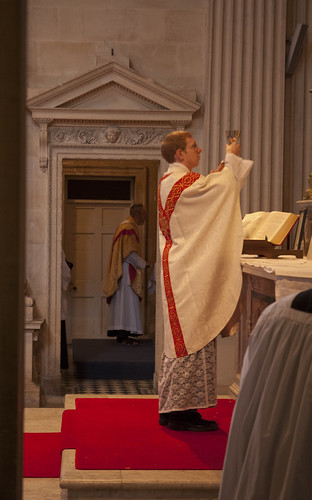 |
| Private Masses at an LMS Priest-Training Conference at Prior Park, Bath |
 |
| A private Mass at another LMS Priest Training Conference, at Belmont Abbey. |
New podcasts, with Roger Buck
The Latin Mass Society's Iota Unum Podcast series continues with two podcasts with the author Roger Buck. You can find them on Podbean, Spotify, and ITunes: search for the Latin Mass Society
Part 1: What is the New Age? (Podbean)
Part 2: Theosophy and the roots of the New Age (Podbean)
Roger Buck was born in California, was brought up partly there and partly in England, and has also lived in various places on the Continent. He is currently living in Ireland. He spent close to three years living at the New Age centre at Findhorn in Scotland, and nearly twenty years in the New Age milieu, before his conversion. Roger’s conversion story is described in his book Cor Jesu Sacratissimum, which defends the Latin Mass and details the tragedy of the post-Vatican II Church.
More about Roger Buck can be found here:
Roger’s website
Roger’s YouTube channel
Roger’s books:
The Gentle Traditionalist: A Catholic Fairy-Tale from Ireland (2015) (LMS Shop)
The Gentle Traditionalist Returns: A Catholic Knight’s Tale from Ireland (2019) (LMS Shop)
Cor Jesu Sacratissimum: From Secularism and the New Age to Christendom Renewed (2016) (LMS Shop)
Support the Latin Mass Society




